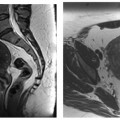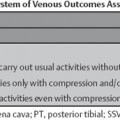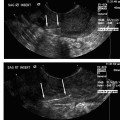14 Clinical Perspective: Interventional Radiology and Patient Fertility Robert L. Worthington-Kirsch Interventional radiologists have become increasingly involved with women’s health issues over the last few decades. This has led to increased participation in the care of patients presenting with symptomatic uterine fibroids, pain due to pelvic congestion syndrome, or infertility due to fallopian tube pathology. In any of these cases, fertility issues become a significant consideration during the course of managing these patients. Fertility issues are important when considering any procedure performed on women of childbearing age, but are especially critical when contemplating procedures treating the genitourinary system. Radiation safety concerns are paramount in this population as outlined in an earlier chapter. However, there also should always be an awareness of what direct effects a particular procedure will have on fertility. This chapter will provide an overview of fertility issues surrounding the treatment of fibroids and fallopian tube interventions. Before any discussion of the clinical issues surrounding treatment, one has to address the importance of building a team to address these issues. There must be clear and continuous channels of communication between the interventional radiologist and both the primary gynecologist and the reproductive endocrinologist providing care for each patient. This ensures that each patient is provided with a plan for care that is thorough and coherent. In my practice, there is a steady stream of correspondence between all three of these physicians, as well as frequent personal communications by phone and e-mail, regarding each patient. In addition, it is important for the interventional radiologist to develop a true physician—patient relationship with each patient. All women should be seen for an office consultation before any elective invasive procedure. This allows the interventional radiologist to become familiar with the patient’s medical history and current situation. It also is invaluable for setting a woman at ease regarding a physician who is going to be providing medical care in an area of life (and anatomy) that may have tremendous emotional repercussions. To gain that trust, an open discussion that includes the potential risks as well as the potential benefits of any procedure being considered must be held with the patient. This relationship continues after any procedure because the interventional radiologist is responsible for postprocedure and recovery issues, follow-up, and management of any complications that may occur. The importance of this is that physicians who do not have training in interventional radiology (IR) including the gynecologist, primary care physician, or local emergency room [ER] staff will likely be unfamiliar with issues that arise after IR procedures and therefore may not be able to manage them appropriately. Fibroid disease is extremely common and is one of the most frequently encountered diseases of the uterus; as many as 40% of all women will experience fibroid-related symptoms during the reproductive phase.1,2 Fibroids most commonly cause symptoms of abnormally heavy menstrual bleeding (menorrhagia and/or menometrorrhagia) and/or bulk or pressure symptoms such as urinary frequency or urgency (occasionally bladder outlet obstruction), sensation of a pelvic/abdominal mass, and dyspareunia. Fibroid disease can also contribute to subfertility. The exact relationship between fibroids and subfertility is unclear in many cases. It is generally accepted that submucosal fibroids can interfere with progression of a pregnancy by distorting the uterine cavity, which can contribute to increasing the risk of miscarriage.3 If fibroids grow in the vicinity of the uterine cornua, they can occlude or distort the fallopian tubes. Although some have suggested other mechanisms for fibroids to impact fertility, these are less well understood. When it comes to fertility issues, in my experience there are two types of fibroid patients. The majority of women presenting for treatment of uterine fibroids are seeking relief from fibroid-related abnormal bleeding and/ or pressure. Most of these women have completed child-bearing or have no interest in future fertility. In some of these women, preservation of fertility may be a consideration, but is usually of secondary importance. Many of these patients have no immediate plans to have children or additional children, but are not yet ready to abandon that possibility. However, a small number of women who present to an interventional radiologist for fibroid therapy have fibroid-related subfertility as their primary concern and may or may not have fibroid-related symptoms as well. The most common therapy offered to women with fibroid-related subfertility is myomectomy. In women who have small numbers of small to moderate-sized fibroids that are easily accessible, myomectomy provides excellent results for preserving or improving fertility, especially if a hysteroscopic approach can be utilized.4 However, as the fibroid burden increases (number and/or size of fibroids) there may be a greater likelihood of surgical complications or poor fertility outcomes.2 There is also a significant incidence of fibroid recurrence after myomectomy, and fertility outcomes after repeat procedures are generally poor.5 Women who have large fibroid burdens may also run an unacceptably high risk of conversion of an attempted myomectomy to hysterectomy due to intraoperative bleeding.
Fibroid Interventions
Stay updated, free articles. Join our Telegram channel

Full access? Get Clinical Tree








